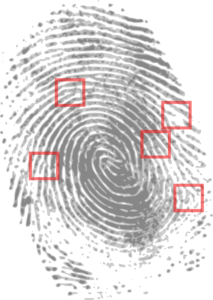
Fingerprint Cards
It’s common knowledge that everyone has a unique fingerprint—even identical twins do. But why is this the case?
Because fingerprints are formed during fetal development, they are greatly affected by subtle mechanical forces that the fetus experiences in the uterus. While the fingerprints of identical twins do exhibit a great deal of similarity, the details where skin ridges meet, end, or bifurcate, are still different. This is because during fetal development, the twins occupied different positions in the womb. As a result, they were subjected to a slight variation in mechanical forces. This variation makes a difference in the details of the fingerprints.
As to the exact nature of the fingerprints formation, researchers have discovered a few insights. First of all, the ridges of our fingerprints are probably formed as compressive stresses develop in the dermal cell layer of the skin (which is sandwiched between the epidermis and the subcutaneous tissue). Furthermore, ridges are parallel where the skin is flat, but because our fingertips are not flat, the ridges form according to the lines of similar stress. At the highest point of our fingertip pad, the ridges form in circles. Where the fingertip pads are regressing but stay high longer, ridges form whorls, while pads that steeply regressed result in a simple arch pattern. And during the formation process, the meeting of ridges and regression results in intermediate loop patterns.
